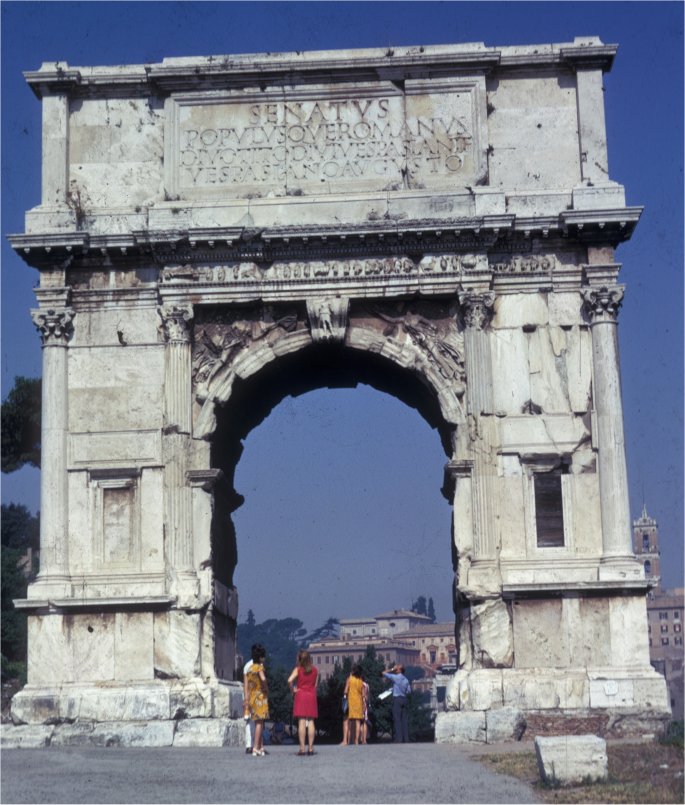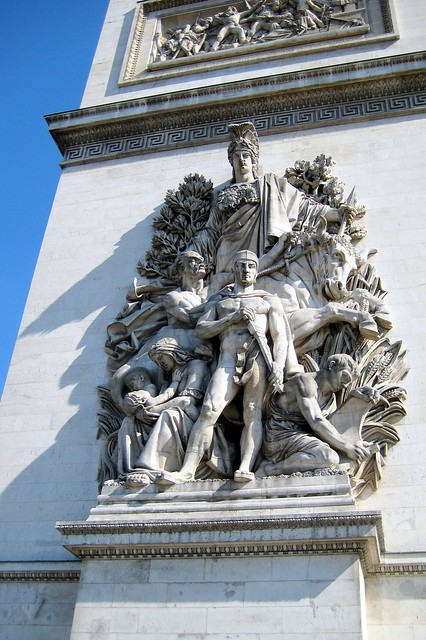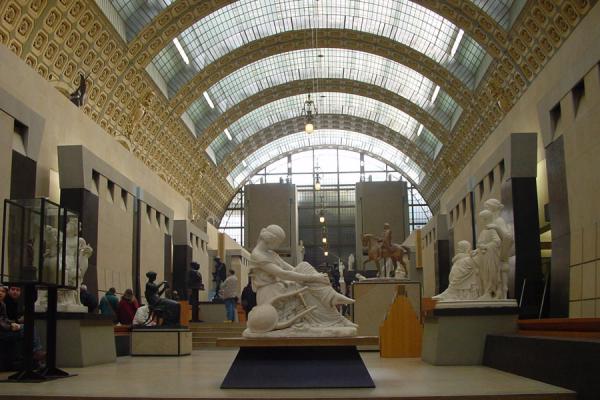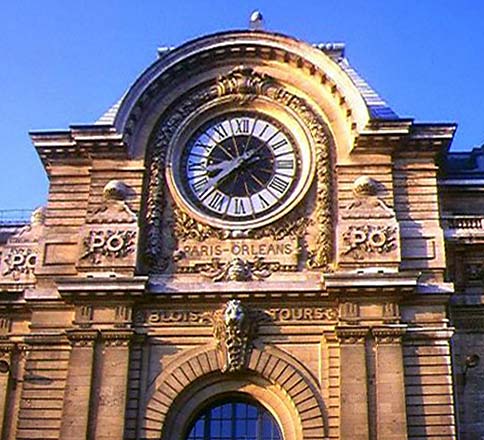Outside of the Pompidou Center
The exterior of the Pompidou Center is covered with pipes, vents, supports, and escalators -- to me, it looked like a large building undergoing construction. Its exterior sparked intense objection when the building was built, before it came a major attraction -- the people said that it was ugly, and in truth (at least in my opinion) it is ugly. But it is ugly in a good way, because it gives the building its unique look and does not match any other building in the world. The design also has a functional purpose, too -- since the pipes and escalators are on the outside, the inside is more spacious and has extra room for the exhibits of modern art contained inside. Also, each group of pipes that has the same function is colored together, and this color-coding shows the public a little bit about how a building's piping works.
The sculpture at the top of the picture above is a famous mobile by Alexander Calder. Many objects in the modern style are built to move, swing, or change -- there was even a piece of art that we were allowed to walk inside!
The view from the top of the Pompidou Center
The view into the Pompidou Center
+148.JPG)
+149.JPG)


+154.JPG)



+066.JPG)
+080.JPG)
+042.JPG)






+047.JPG)
+057.JPG)
+005.JPG)
+006.JPG)
+012.JPG)
+015.JPG)
+028.JPG)
+022.JPG)



